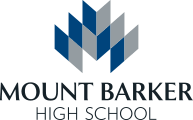Problems are our friends
At the end of Martin Seligman’s first visit to Adelaide in February, I was sitting at a table with Martin and other partners in his residency. I remember feeling uncertain about how to move forward and daunted by the fact that there were so few answers to so many questions.
This was just the start of Mount Barker High School’s positive psychology venture, and I was trying to grasp the task we had taken on. What was expected of us? What does positive psychology offer? What was possible to make things better for our school and the young people we serve? What could we deliver? Where could we start?
At that meeting, I was struck by a comment made by a DECD (Department for Education and Child Development) executive. He suggested it would more useful to respond to Martin’s residency by investigating the applications of positive psychology rather than moving straight into implementing them.
This made a lot of sense. If we didn’t know how to do it as a school, how could a large government agency know how to do it on a large scale?
This fitted well with what Martin does. He points to what research says is the way forward. He provides proposals based on what scientific research says works. What he can’t say is exactly how to go about it in our own places. This is our job. We’re educators who work in a system that has its own policies and processes. We work within our local community. We work with our students to meet their educational needs on a daily basis.
Finally, I could see a way forward.
Problems are our friends…
Well known researcher into change processes, Michael Fullan, wrote that “problems are our friends”. It was clear to our school that we needed to ‘problematise’ our task. This is the basis of effective action research and school reform.
Over the next few months, settling on questions to drive our investigation became a major focus. They needed to be specific enough for us to know they could be answered, but challenging enough to take us into areas we hadn’t yet gone as a school. They needed to be practical enough to lead us into reviewing how we work, and how we can work differently. We had also been thinking about questions to help us draw on our strengths as a school and the community that we are a part of.
The diagram below represents what we decided on. The words change a bit depending on the audience we’re talking with, but the ideas now drive us forward. The central question provides our major focus, while the three surrounding questions break it down into more specific areas of inquiry. *Click on the image to see a larger version


